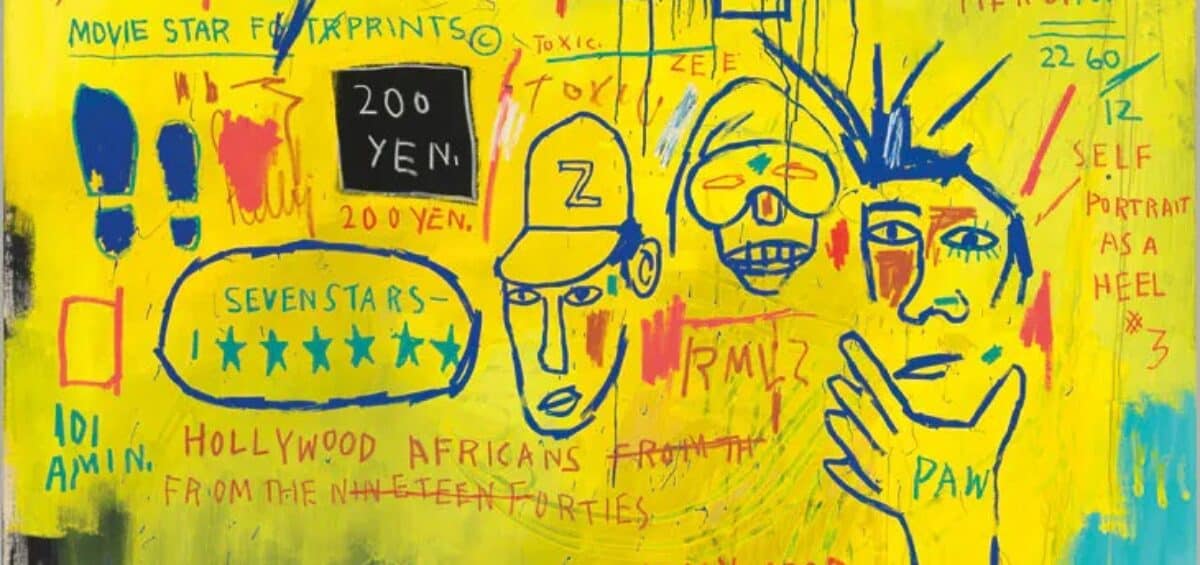We do Art PR UK and Music PR UK . So we have thoughts on .The intimate relationship between art and music goes back a long way.
Quite possibly to a time before recorded history.
Creatives and scientists agree that engaging in one process whilst listening to audio stimulus.
Will directly affect the results.
Jackson Pollock painted to a soundtrack of bebop pioneer Dizzy Gillespie.
The works of street-artist Jean-Michel Basquiat are synonymous with the birth of hip-hop.
Presented here below are just ten great examples of how these two disciplines intertwine.
Five musicians whose creativity embraced the art world,
And five visual artists whose works are most famously associated with music.
James McNeill Whistler
Whistler titled many of his paintings after musical terms.
“Symphony In White,” “Arrangement In Grey And Black” and “Nocturne In Blue And Silver” are just three examples. In fact, Whistler painted many “Nocturnes” – moonlit landscapes of hazy beauty.
The word, nocturne, before Whistler appropriated it, was applied specifically to music, especially denoting:
“A dreamy pensive composition for the piano.” (Mirriam-Webster).
After art collector Frederick Leyland connected Whistler’s night-scenes with Chopin’s nocturnes.
Whistler enthusiastically embraced the concept.
There is no denying that Whistler’s and Chopin’s nocturnes fit together wonderfully.
Mason Williams
American singer-songwriter Mason Williams is another whose talents extend far beyond one discipline.
Probably most remembered for his hit single, “Classical Gas.”
Williams is also a talented artist and designer.
With his memorable photography project “Sunflower.”
Williams hired a ‘smoke-writing’ plane to create trails.
Which transformed the sun itself into the titular flower.
For the cover of his album, “The Mason Williams Phonograph Record,” he designed.
A life-size cardboard cut-out of a Greyhound bus.
Kandinsky
Like Whistler, Kandinsky also gave his works music-related names – “Compositions,” “Improvisations,” “Impressions.” His art focused on the balances and tensions between colours, producing “chords” of different hues. He argued passionately that all great art should provide a multisensory experience. Kandinsky’s “symphonies on canvas” are almost alive with motion. “It became quite clear to me,” he stated, “that art in general was far more powerful than I had thought, and that painting could develop just such powers as music possesses.’
Captain Beefheart
The enigmatic Don Van Vliet is another on this list whose creative output embraced both music and art. Vliet, who possessed little formal training, and therefore did not think of musical composition in classical terms, often used visual metaphors to describe to his band-mates the sound that he was seeking from them. His music is explosive and expressionist, though it clings lovingly to the blues. After a short music career, he turned exclusively to painting.
Paul Klee
If music were put through a magic algorithm which turned sound into colours, you wouldn’t be surprised to see some of Klee’s compositions arise. The Swiss-born artist was a prodigy on the violin, and for many years was torn between the two mediums. Whilst he eventually chose art, Klee never lost his enthusiasms for music, and it is clear that techniques used in music composition highly influenced his paintings.
Storm Thorgerson
English graphic designer and artist Storm Thorgerson occupies an unique place in music history. Thorgerson and his design company, Hipgnosis, are indelibly linked with the Progressive Rock movement, having designed a number of iconic album coves within the genre, most notably for the band Pink Floyd. His art for the Pink Floyd album “Dark Side Of The Moon,” is quite possibly the most recognizable record-sleeve ever made.
Rachmaninoff
Rachmaninoff’s brooding symphonic poem “Isle Of The Dead” remains one of the composer’s most memorable works. He wrote this piece after viewing the painting Die Toteninsel by Arnold Bocklin. Swiss-born Bocklin, in fact, produced a whole series of paintings of the same scene. Each contains set elements – a menacing island in a dark-watered lake, ominous cliffs, crypt-like structures and a boat containing a mysterious white-robed figure. Listening to Rachmaninoff’s work, the connection is striking.
Alan Dweck
Guitarist and composer Dweck, with the band 229, were one of the first bands to venture into Eastern Europe following the collapse of the Berlin Wall. They took with them Canadian artist, David Bizzo. During 229s free-form improvisations, Bizzo would create unique works on large canvases at the back of the stage, setting up a three-way communication between the musicians, the artist and the audience. Dweck, whose sound is arguably as eclectic and questing as Bizzo’s paintings, continues to explore the link between music and fine art., with a proposed live show coming soon.
PJ Crook
English painter and sculptor PJ Crook possesses an unmistakable style which is immediately arresting. Though her work extends far beyond the musical world, Crook’s singular works came to the attention of many through a series of stunning collaborations with progressive rock band King Crimson. Over more than ten years, Crook designed a series of unforgettable album covers which perfectly matched the off-kilter, exploratory music of the band.
Jah Wobble
Bass-player and composer, Jah Wobble is a musician whose creativity spills out in all directions. His music can be trance-like, meditative and thoughtful. It can also be propulsive, rousing and challening. Over the last few years, Wobble’s paintings have been exhibited in many galleries – dark and atmospheric pieces with striking silhouettes of buildings. He vocalises a direct link between his art and his bass-playing; in both cases constructing structures from geometrical shapes and sequential passages.
Quite Great PR
For many years, Quite Great has worked with many musicians, artists, photographers and charity organisations covering all types and styles of music and art. Read our client testimonials and get in contact with our team of experts today.








